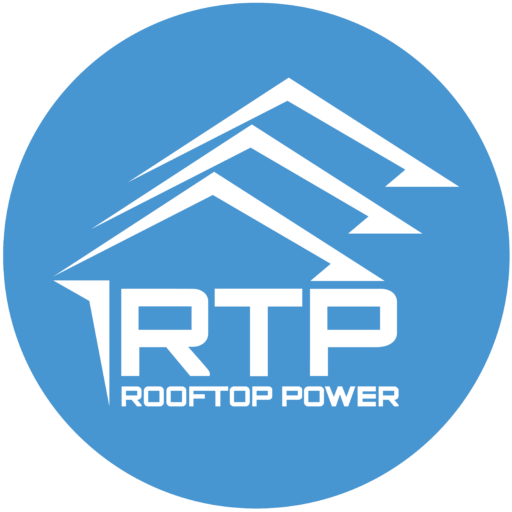How Solar Panels Work
How Solar Panels Work
A solar panel is a device that uses sunlight to generate electricity. It uses photovoltaic cells made of silicon to turn sunlight into electrical current. This energy is then converted to power using an inverter. The inverter converts the DC power from the solar panel into AC power. Solar panels can convert up to 20% of the energy from the sun into electricity.
Photovoltaic Cells Convert Sunlight Into Electricity
Photovoltaic cells are the components of solar panels, which convert sunlight into electricity. These cells contain wafer-thin layers of p-type and n-type silicon. When sunlight strikes the cells, the photons excite the electrons and holes in the cells, which form an electron-hole pair. The electrons and holes are then pulled apart by an electric field and travel to opposite sides of the solar cell.
Photovoltaic cells are the most common component of solar panels. These cells contain two layers of silicon, one of which is positively charged and the other negatively charged. When sunlight hits the silicon, it knocks the electrons loose, causing solar electricity to flow through the material.
The process of solar energy conversion is very simple and effective. The sunlight that strikes the earth's surface in an hour can power the world's energy needs for a whole year. By using solar technologies to harness this energy, we can create electricity and store it in batteries or thermal storage.
Solar cells can absorb more energy than plants, because they capture light from the entire spectrum. In addition to absorbing more energy, solar cells can also convert light into heat. For instance, if you want to heat water, you can use solar thermal technology. Passive solar heating involves letting the sun shine through your windows.
An Inverter Converts DC Power To AC Power
Inverters are electrical devices that change the direction of a DC source into an AC voltage. They are also used with transformers to change a DC input to an AC output. An inverter's output power cannot exceed its input power due to the laws of conservation of energy. Some of the energy is lost as heat when the electricity flows through the various components of the device. But inverters have a high efficiency rate, usually over 90%.
A typical inverter is an electromechanical device with a spinning plate and criss-cross connections. The spinning plate repeatedly switches between the primary winding and the secondary winding, producing alternating current. The frequency of this alternating current depends on the speed of the rotating disk.
Inverters convert DC to AC power for solar panels. They work by utilizing magnetic fields to transform the energy from a DC source to an AC one. The AC created by a solar panel is artificial and is less smooth than the AC generated by a generator. This artificial AC is then processed with filters to eliminate unwanted interference.
Moreover, inverters can charge batteries directly. If solar panels are connected to a battery bank, an inverter can convert the voltage to AC and provide electricity to the home when the sun is not available. This means that you don't have to worry about overcharging backup batteries.
Why Are Solar Panels Made of Silicon?
Silicon is one of the most common materials used to make PV cells. This material is relatively inexpensive and easy to manufacture, making it a good choice for home solar energy systems. However, if you're interested in maximizing your solar energy production, you may want to consider using a cell that has multiple junctions. These are more expensive than single-junction PV cells, but they can offer higher efficiencies.
Silicon is the second most common element on the planet and is found in about 30% of Earth's crust. Unlike other elements, silicon is relatively resistant to degradation. Because it's so resistant to environmental factors, it's ideal for industrial power generation. When used in solar panels, silicon is made into a thin film using a reduction process. This removes oxygen and creates metallurgical-grade silicon.
Silicon is the most common semiconductor material in solar cells. It makes up approximately 95% of the solar modules on the market today. It is the second most abundant element on Earth after oxygen and is used to make computer chips. The crystalline silicon cells have a highly organized structure that makes them more efficient at converting sunlight to electricity.
Silicon has two different types of semiconductors: n-type silicon and p-type silicon. N-type silicon is made by adding atoms with more electrons than silicon. Phosphorus, for example, has five electrons in its outer energy level and bonds with neighboring silicon atoms. The remaining electron is free to move within the silicon structure.
How Does a Solar Panel Convert Sunlight?
The key to making solar panels work effectively is maximizing the amount of sunlight that hits them. Ideally, solar panels should be placed in a place with a moderate climate and optimum sunlight levels. In Europe and North America, the optimal season for solar panels is summer, though they can still function at a low level during the winter. The size and power of solar panels also affect their ability to collect sunlight. Smaller solar panels tend to take longer to absorb sunlight than larger ones. They also require a higher number of solar panels to work efficiently.
Solar panels need direct sunlight to generate electricity, but they can function even in indirect sunlight. Solar panels use semiconductors called solar cells to convert sunlight into usable electricity. However, solar panels can't function in full shade. They can also work well in partial shade or when the sunlight is not strong enough.
Another important factor in determining the size of solar panels is the amount of energy required to operate the appliances in the home. If you have electric appliances, you will require a larger solar system than if you have heat-based appliances. In addition, you'll need to think about the amount of time that the appliances will be used. If they're only used for a few hours, you won't need a large solar system.
While solar panels work well with indirect sunlight, they produce the best results when the sun is shining directly on them. Using solar reflectors to increase the amount of direct sunlight that hits the panels can increase their efficiency by 30 percent. Another option is to use a solar tracking system, which can adjust the angle of panels throughout the day.
Are Inverters Needed For Solar Panels?
Inverters are critical components in solar power systems, converting DC power into alternating current (AC). These devices are also used to charge batteries directly. The DC-to-AC ratio is the ratio between the DC capacity of the solar array and the AC power rating of the inverter. Inverters should be sized accordingly to maximize the amount of energy they can convert.
An inverter converts DC electricity to alternating current (AC) for use by the electrical grid. Without an inverter, the electricity generated by solar panels would remain at a fixed voltage in one direction. AC electricity flows in both directions, making inverters essential for solar power systems.
Today, many manufacturers have taken steps to lower the cost of inverters. Many have expanded their manufacturing capabilities to serve emerging markets and have streamlined manufacturing processes. They have also adapted core concepts such as "design for manufacturability" to achieve lower costs. Some manufacturers have also partnered with suppliers to make their inverters more competitive.
Some advanced solar inverters can even disconnect the home from the grid in case of a power outage. They can also provide a computer network portal for monitoring systems. Some advanced inverters can also work on their own without the grid, keeping the lights on while you are away.

